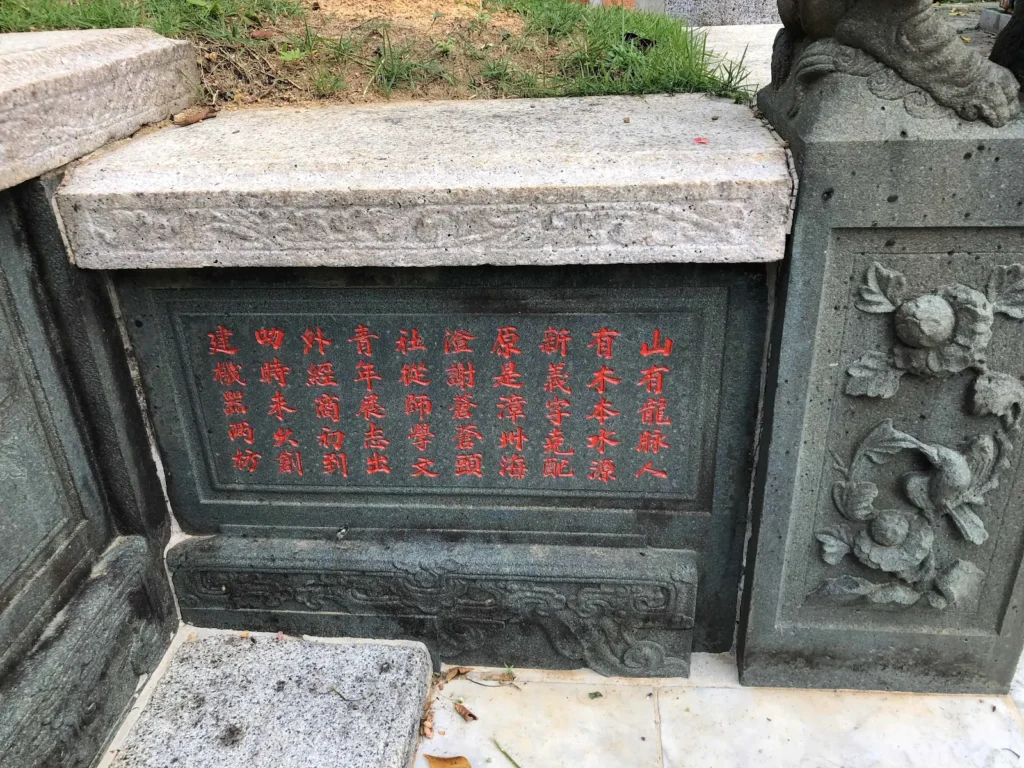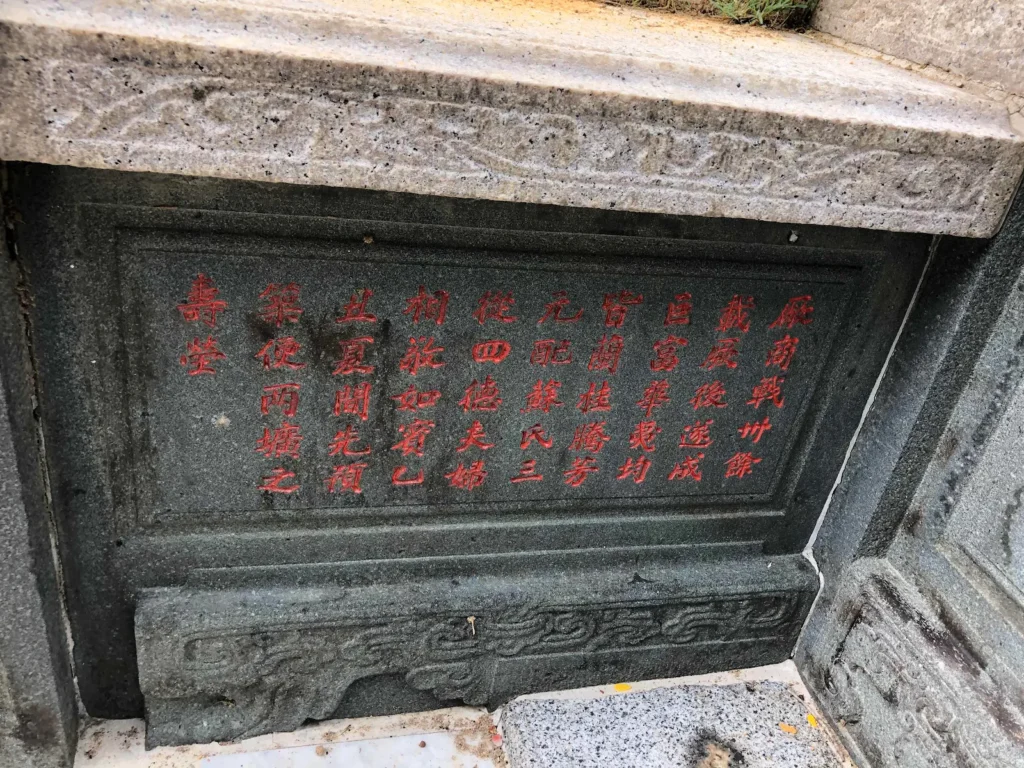05 CHUA SIN GHEE 蔡新義 & MADAM SOH 蘇蜯娘
Mountains have Dragon Veins, People have Their Roots (山有龍脉 人有木本)
CHUA SIN GHEE 蔡新義 (1862 -1927) MADAM SOH 蘇蜯娘 (unknown – 1942)
Place of Ancestry Hai Teng 海澄
Chua Sin Ghee was an educated young man seeking success or adventure. He took a leap of faith and ventured out from his hometown, and journeyed down to Singapore. He did achieve success, which in turn enhanced his standing in society – enough to be noticed and included in a 1922 publication called “Biographies of Prominent Personalities in Nanyang” (南洋名人傳), which recorded the stories of 3,045 prominent Chinese of the day in Southeast Asia.
Apart from his business, we also know he was a community leader. When the Colonial government wanted to acquire part of the Sehnh Chua Burial Ground in Silat Road, they faced a problem: the trustees of the cemetery had long since died out and were never replaced. So on 19 September, 1921, Chua convened a large gathering of the Chua clan at his home and it was agreed that a new Committee of Management had to be formed to negotiate with the government on behalf of the community. Chua was elected Honorary Treasurer.
He died on October 21, 1927 at his home at 139 Lavender Street. A newspaper obituary announced his death at the age of 65 leaving behind a widow, 4 sons, 5 daughters and 15 grandchildren.
The inscriptions on the tombs of Chua and his wife Madam Soh* tells us he was from Hai Teng, an old county in Fujian province
But it is in the epitaph that the story of this man unfolds in his words. In short, the epitaph speaks of the young scholarly man venturing out to engage in commerce, arriving in “叻” or Le, an old name of Singapore, and then establishing his two factories. In classical style, the tomb epitaph also refers to the virtues of his first wife, Madam Soh (元配蘇氏三從四德), and records, “the couple treated one another with utmost respect” (夫婦相敬如賓). What is also interesting is that the epitaph reveals that the tombs had been prepared in 1925, before the death of the couple and what is known as a “live tomb” ( 壽塋).
So the words remain etched in stone to this day for generations of descendants who can still come and be reminded of their origins and roots – beyond what was once printed on paper.
(*For Madam Soh, we were not able to translate her full name in Chinese characters to her Hokkien name in English)
山有龍脉人
有木本水源
新義字克配
原是漳州海
澄謝蒼蒼頭
社從師学文
青年展志出
外經商初到
叻時未久創
建機器两枋
廠高戰卅餘
載厥後遂成
巨富華夷均
皆蘭桂腾芳
元配蘇氏三
從四德夫婦
相敬如賓乙
丑夏間先預
築便两壙之
壽塋
by Darren Koh and Raymond Goh



Recent Comments